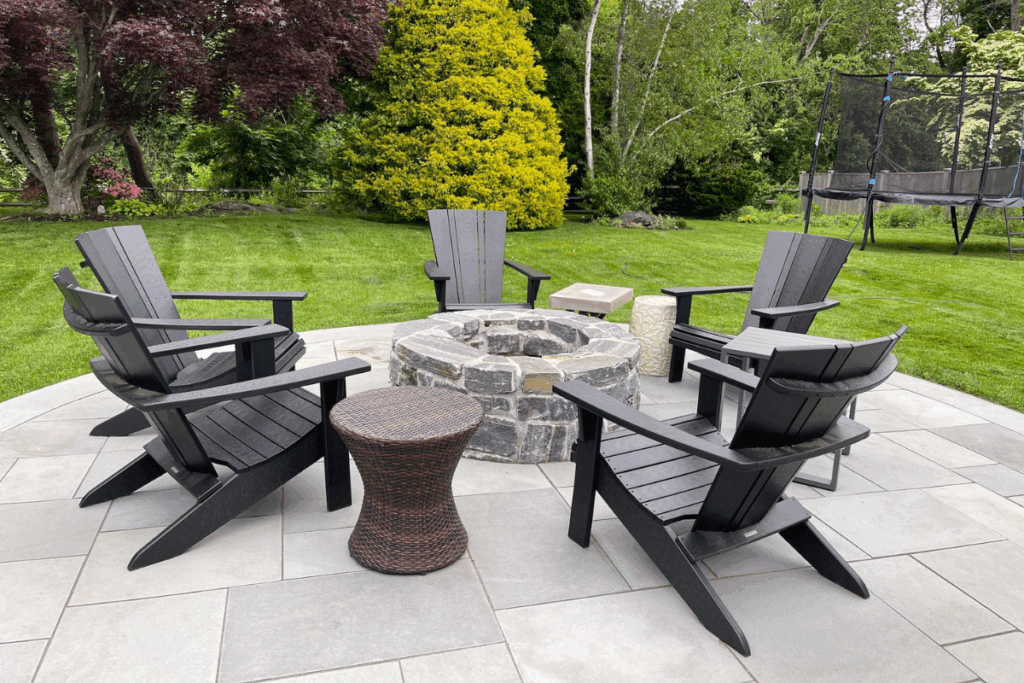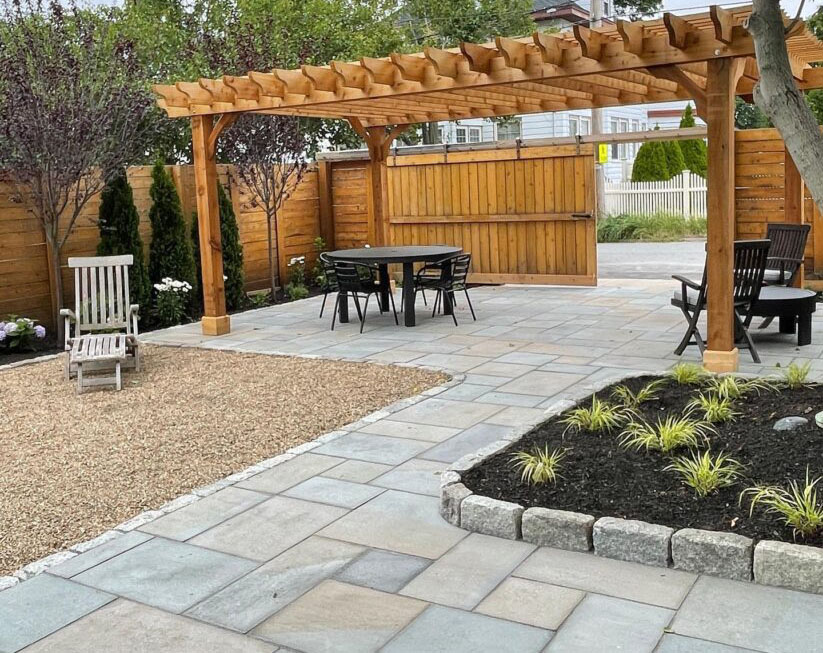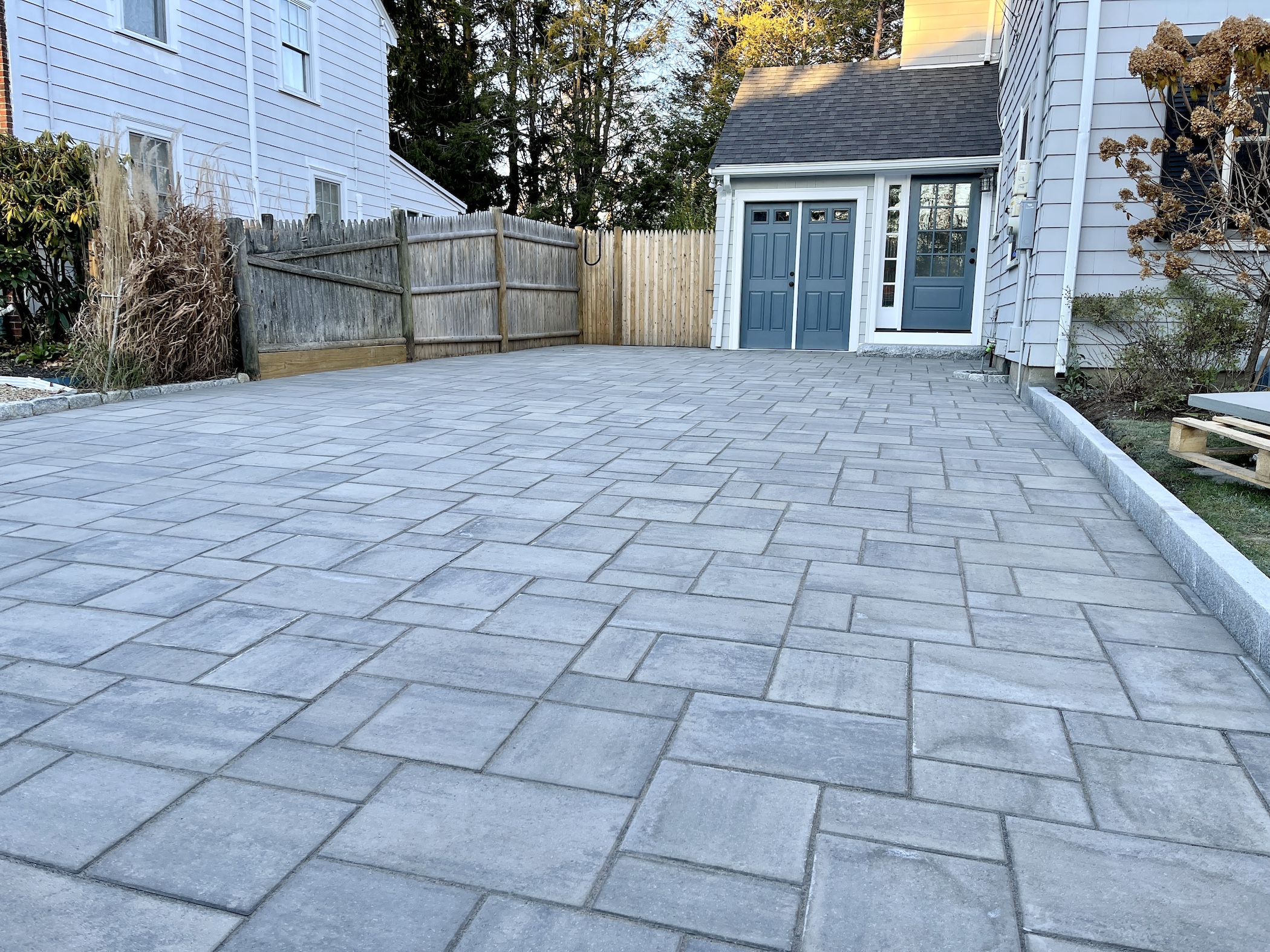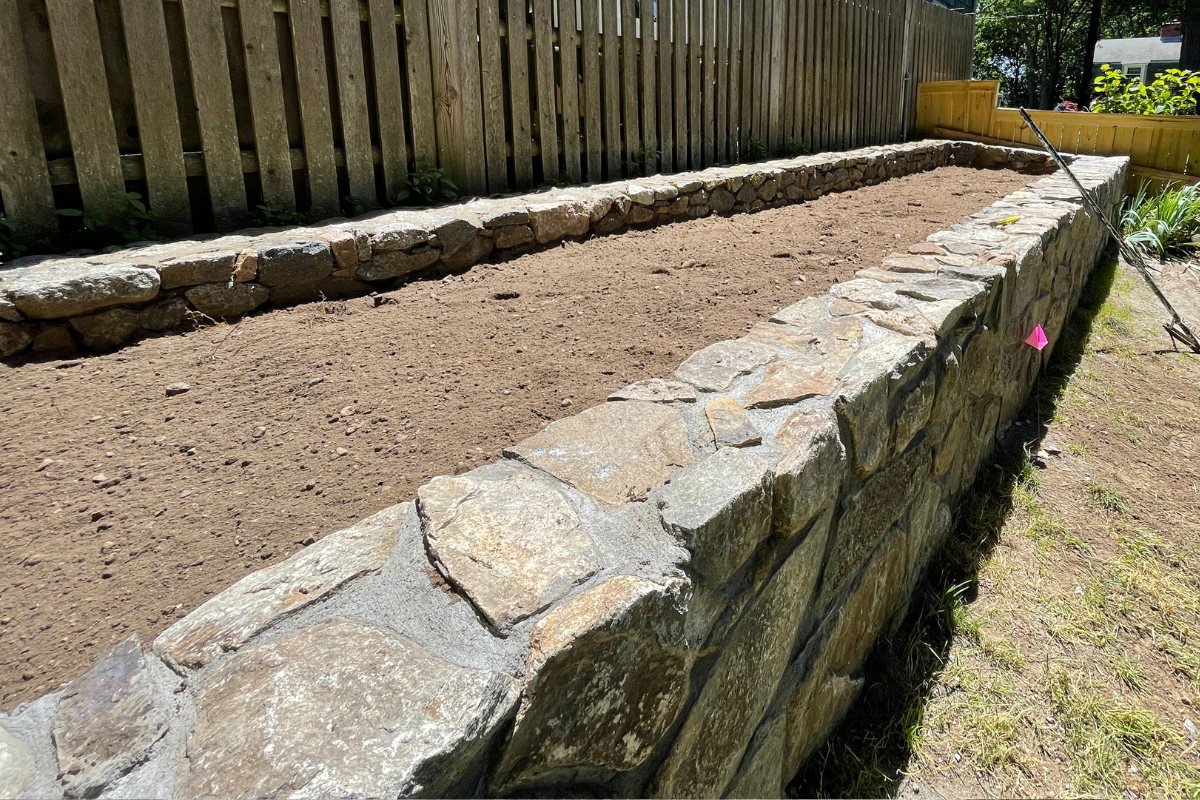
Masonry patios and walls add elegance and durability to any outdoor space, but proper maintenance is key to keeping them looking beautiful year-round. In the Northeastern United States, homeowners face unique challenges, including freeze-thaw cycles, heavy snowfall, and seasonal humidity, all of which can affect the longevity of masonry structures. Without regular care, weather, dirt, and plant growth can cause damage, leading to costly repairs. By following a few simple maintenance steps, homeowners can extend the life of their masonry hardscaping and keep their outdoor areas in top shape.
Why Regular Maintenance Matters for Masonry Hardscaping
Masonry structures, such as patios and walls, are built to last. However, exposure to the elements can lead to problems like staining, cracking, and weed growth. The Northeastern climate, with its hot summers and freezing winters, can accelerate wear and tear. Rain, snow, ice, and temperature changes can weaken materials over time, making maintenance essential for long-term durability.
A well-maintained masonry patio or wall:
- Enhances curb appeal and property value
- Prevents costly damage and repairs
- Ensures safety by reducing trip hazards
- Keeps outdoor spaces inviting and functional
By taking a proactive approach, homeowners can enjoy their hardscaping for years to come.
Seasonal Masonry Maintenance Tips
Each season presents different challenges for masonry patios and walls. A year-round maintenance plan helps keep them in great condition.
Spring: Clean and Inspect
After the harsh Northeastern winter, patios and walls often accumulate dirt, moss, and debris. Spring is the perfect time for a deep cleaning.
- Sweep and Wash: Use a broom or leaf blower to remove leaves and dirt. Then, wash the surface with a garden hose or pressure washer. Salt residue from winter de-icing should be thoroughly rinsed to prevent material breakdown.
- Check for Damage: Look for cracks, loose stones, or signs of shifting. Address small issues early to prevent costly repairs.
- Remove Weeds and Moss: Weeds can grow between pavers and bricks, causing damage over time. Pull them by hand or use a weed killer safe for masonry. In humid areas, especially near the coast, moss can accumulate rapidly, requiring extra scrubbing.
Summer: Protect and Seal
Warmer months bring more foot traffic, sunlight, and occasional storms. Protecting masonry hardscaping during this time helps prevent wear.
- Apply Sealant: A quality masonry sealer protects against stains, moisture, and UV damage. In the Northeast, where summer storms can bring heavy rainfall, sealing helps prevent excessive water absorption. Reapply every few years for best results.
- Control Water Drainage: Ensure gutters and downspouts direct water away from patios and walls to prevent erosion, which is common in sloped yards found in hilly areas like New England and Pennsylvania.
- Clean Spills Quickly: Outdoor gatherings can lead to food, grease, or beverage spills. Clean them up immediately to prevent stains, especially on lighter-colored stonework.
Fall: Prepare for Cooler Weather
Before winter sets in, it’s important to prepare masonry hardscaping for freezing temperatures.
- Remove Fallen Leaves: Leaves trap moisture, leading to moss and mildew growth. Regularly clear them off patios and walls, especially in wooded regions like upstate New York or Vermont.
- Repair Small Cracks: Water can seep into cracks and freeze, causing expansion and further damage. Use masonry filler or mortar to fix minor cracks.
- Store Outdoor Furniture Properly: Moving heavy furniture and planters prevents uneven pressure on patios during the winter.
Winter: Prevent Freeze-Thaw Damage
Cold temperatures can be tough on masonry, but proper care can minimize damage.
- Avoid Harsh De-Icers: Rock salt and chemical de-icers can weaken masonry surfaces. Instead, use sand or calcium chloride for traction, which is safer for pavers and concrete.
- Shovel Carefully: Use a plastic shovel rather than metal to avoid scratching or chipping masonry surfaces.
- Monitor for Ice Buildup: Standing water can freeze and expand in cracks. Clearing ice quickly helps prevent further damage.
Best Practices for Long-Term Masonry Care
Beyond seasonal maintenance, homeowners should follow these best practices to keep their masonry patios and walls in excellent condition.
1. Regularly Inspect for Structural Issues
Cracks, shifting stones, or leaning walls may indicate a deeper problem, such as poor drainage or foundation settling. In the Northeast, where heavy snowfall can put pressure on retaining walls, regular inspections are crucial.
2. Keep Plants and Roots in Check
Trees and shrubs planted too close to masonry structures can cause damage as their roots grow. Trim back vegetation and consider root barriers if needed. Fast-growing species like maples and willows are particularly known for root intrusion.
3. Use Proper Cleaning Methods
Different masonry materials require different cleaning approaches:
- Brick: Gentle scrubbing with a brush and mild detergent works best.
- Concrete: Pressure washing is effective but should be done at a low setting to prevent surface damage.
- Natural Stone: Avoid acidic cleaners, which can erode the stone’s surface. Many Northeastern homes use bluestone or fieldstone, which require special care to maintain their natural color.
4. Reapply Joint Sand or Mortar as Needed
For paver patios and brick walls, the joints between stones should remain filled to prevent shifting. Over time, rain and foot traffic can wash away sand or mortar, requiring reapplication. This is especially common in areas with heavy freeze-thaw cycles, such as Massachusetts and New Hampshire.
5. Consider Professional Maintenance for Large Repairs
While homeowners can handle basic cleaning and upkeep, serious damage—such as leaning walls or deep cracks—should be assessed by a professional mason. Investing in expert repairs can prevent further deterioration.
Conclusion
Masonry patios and walls require regular maintenance to stay beautiful and functional year-round, especially in the changing climate of the Northeastern United States. By following seasonal care routines, inspecting for damage, and using the right cleaning techniques, homeowners can protect their investment and enjoy their hardscaping for decades. With proper upkeep, masonry hardscaping remains a durable and attractive feature in any outdoor space.




